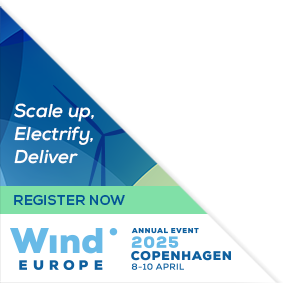Presentations
Siblings:
ProceedingsProgrammeSpeakersPostersContent PartnersPowering the FutureMarkets TheatreResearch & Innovation in actionStudent programmePresenters dashboard
The Hull Trim System: maximizing value for floating wind projects
Inês Serras Pereira, LCOE and Business Intelligence Lead, Principle Power
Abstract
In this presentation, the audience will be presented with the methodology, results, and sensitivities of a techno-economic study that shows how the hull trim system (HTS) can increase Annual Energy Production (AEP) by up to 2.0%, in semi-submersible floating wind platforms, compared to passive platform concepts. The WindFloat® technology consists of a 3-column semi-submersible platform that employs a hull trim system which, based on sensors installed onboard, autonomously moves water between the columns to compensate for the WTG thrust force and keep the platform close to an even keel. During normal operations, the hull trim system adjusts the center of gravity of the WindFloat® platform to compensate for wind speed and wind direction changes which would otherwise result in a change in the mean platform heel angle. This system ensures optimum performance when the WTG is producing power, and it reduces static loads in all operating conditions. To quantify the costs and benefits of the hull trim system, a Net Present Value calculation was used. The NPV analysis was first run for a base case of - a 1GW floating offshore wind project with a design life of 30 years. The NPV calculation considers the following: * The additional revenue resulting from the AEP gains provided by the Hull Trim System, discounting wind farm losses and pump consumption, compared to a passive platform * The CAPEX associated with the Hull Trim System engineering, equipment, and installation * The CAPEX savings in primary steel, compared to a passive platform * The additional OPEX increase related to Hull Trim System equipment maintenance, compared to a passive platform Sensitivity analyses were performed on the discount rates, escalation rates, and electricity tariffs, to test the validity of the conclusions.










